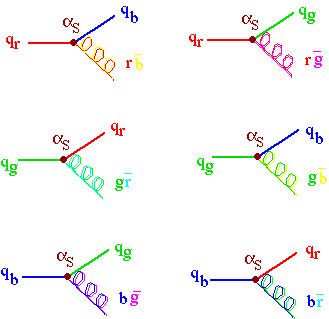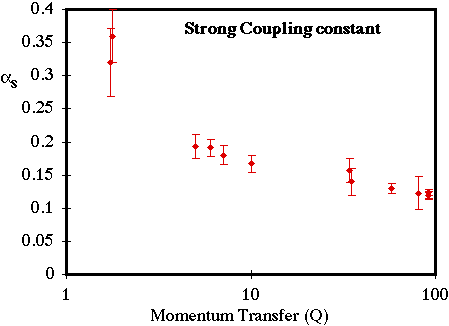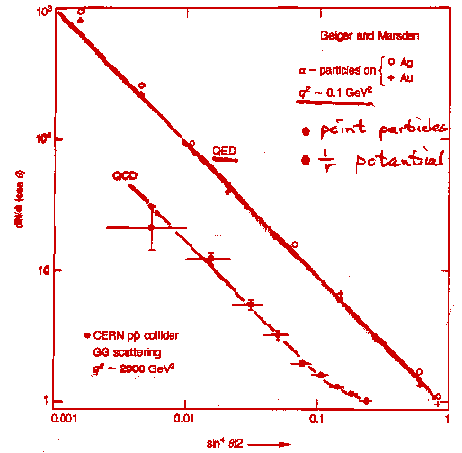
Physics 357 : 1998 Lecture 23
Quantum Chromodynamics
Quantum ChromoDynamics (QCD) is an SU(3) gauge theory based on 3 colour charges, needing 8 gauge bosons to mediate the transformations between the 3 colours. There are 6 explicitly coloured gluons

and two antisymmetric colour-anticolour gluons from the 3 colour-anticolour possibilities:

(One can choose any two colour-anticolour combinations, e.g.

and
 ,
,as long as they are orthogonal to each other and to the symmetric combination

which is not a gluon.)
The most important difference between gluons and photons is that gluons carry colour charge, but photons do not carry electric charge.
SU(3)colour is thought to be an exact symmetry, but there only experimental limits on a gluon mass are crude estimates of about 10 MeV.
QCD is not the only possible SU(3)colour based gauge theory. SU(3)colour allows additional interactions which violate P and T symmetries. There is no theoretical reason for such interactions to be absent, but current experimental limits on P and T violations in strong interactions tell us that any SU(3)colour P and T violation interactions are at least 8 orders of magnitude weaker then the P and T conserving QCD interactions. Various theoretical explanations of the absence of P and T violations (e.g. axions) have not been confirmed experimentally.
At low energies the coupling constant of QCD, as, is of order unity, so perturbation theory is not valid and it is almost impossible to calculate anything. QCD gets weaker with increasing energy, however, (see F&H equation 14.58) so at high energies QCD is similar to QED, and experimental tests are possible.

The observed potential for heavy quark-antiquark systems can be approximately fit to


Return to List of Lecture Notes